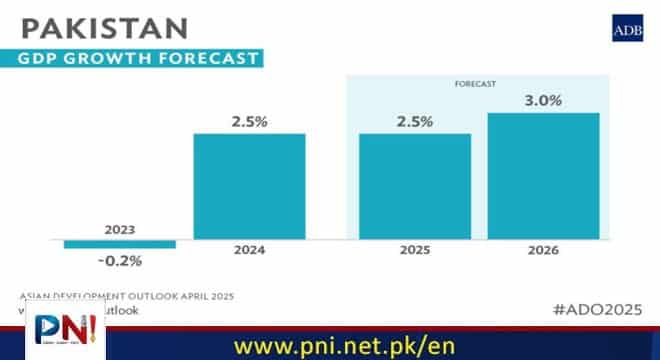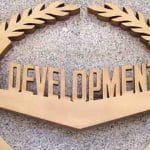ISLAMABAD, Apr 9 :Pakistan’s economy is showing signs of stability and recovery with growth in FY2025 (ending 30 June 2026), as the effects of tight macroeconomic policies and progress in economic reforms took hold.
According to the Asian Development Outlook (ADO) April 2025, the Asian Development Bank’s (ADB) annual flagship economic publication, Pakistan’s real gross domestic product (GDP) is expected to grow by 2.5% in FY2025, the same growth rate from FY2024.
ADB says Pakistan’s growth is projected to tick up to 3.0% in FY2026. The growth outlook is being helped by a more stable macroeconomic position helped by the International Monetary Fund (IMF) Extended Fund Facility (EFF) arrangement that began in October 2024. Adherence to the economic adjustment program is critical for building resilience and enabling sustainable and inclusive growth.
“Pakistan’s economy has benefitted from improved macroeconomic stability through robust reform implementation in areas such as tax policy and energy sector viability,” said ADB Country Director for Pakistan Emma Fan.
“Growth is projected to persist in 2025 and to increase in 2026. Sustained implementation of policy reforms is vital to buttress this growth trajectory and fortify fiscal and external buffers,” Fan added.
In FY2025, growth is expected to be driven by a rebound in private sector investment linked to progress on reform measures, perceptions of greater economic stability, and a stable foreign exchange market.
The successful implementation of the reform program is anticipated to continue creating a more stable macroeconomic environment and gradually remove structural barriers to growth.
Economic activity in both the industrial and service sectors will benefit from recent monetary easing and macroeconomic stability. Additionally, strong remittance inflows, lower inflation, and monetary easing are likely to support aggregate demand.
Average inflation is projected to decline significantly to 6.0% in FY2025 and further to 5.8% in FY2026. That’s being driven by continued moderation in food inflation, stable global oil and commodity prices, moderate domestic demand conditions, and a favorable base effect.
Female labor force participation remains low in Pakistan compared to regional and peer countries and enabling more women to work outside the home could boost productivity and output while advancing female empowerment.
Continued investment in girls’ education and vocational training programs that equip women with the skills needed for the job market, while improving public transport and ensuring safe travel options, can reduce barriers for women entering the labor market.
The ADB clarified that the growth forecasts were finalized prior to the 2 April announcement of new tariffs by the US administration, so the baseline projections only reflect tariffs that were in place previously.
However, ADO April 2025 does feature an analysis of how higher tariffs may affect growth in Asia and the Pacific.
Follow the PNI Facebook page for the latest news and updates.








